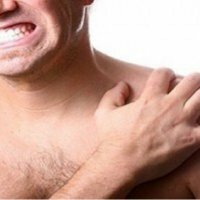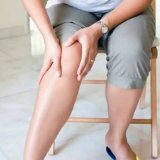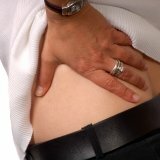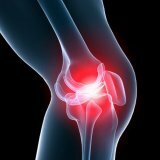Periarthritis of the shoulder joint

The periarthritis of the shoulder joint, also referred to as the humeroscapular periarthritis, is inflammation of the tendon of the shoulder, as well as the capsules of the shoulder joint. However, the internal deep structures of the joint, the joint, and also the cartilage of the joint are not damaged. This is the difference between the periarthritis of the shoulder joint from arthrosis or the arthritis of this joint.
Causes of periarthritis of the shoulder joint
This disease develops usually after any injury, stroke, fall on the shoulder or an elongated arm. Also, joint periarthritis can develop due to excessive physical exertion.
Some internal diseases can contribute to the development of the periarthritis of the shoulder joint. Left-sided humeroscapular periarthritis sometimes occurs due to myocardial infarction. During a heart attack, spasm or death of a whole group of blood vessels occurs, and this often leads to a worsening in the left shoulder region of blood circulation. Tendon fibers without proper blood supply are made brittle, tear, spasmodic, swelling and inflamed. This disease of the shoulder joint can provoke liver disease.
Periarthritis of this species often develops in women who have undergone a surgery to remove the mammary gland. Sometimes this is due to the fact that this operation changes the bloodstream in the adjacent areas of the chest, as well as the fact that during the operation important vessels or nerves were damaged.
The development of humerous periarthritis is facilitated by diseases of the cervical spine. Chronic spasm of the neck muscles or displacement in the neck of the intervertebral joints leads to the infringement of nerves in the cervico-brachial plexus. Infringement of nerves provokes response reflex spasm of vessels, which are located in the hand. As a result, the circulation of the arm( shoulder) is disrupted, and the tendons of the shoulder become inflamed and swell. Due to the complex structure of the shoulder joint, inflammation of the tendons occurs around it, sometimes very hard, since a large number of ligaments, small muscles, tendons, vessels and nerve trunks are intertwined in the shoulder area. All this complex structure quickly "responds" to inflammation to the slightest damaging effect, whether it is tearing, overloading or inflammation of individual ligaments or tendons.
Symptoms of the periarthritis of the shoulder joint
Accompanying the humeropathy periarthritis with aching permanent pains in the shoulder joint. This pain disturbs and at rest, is often amplified at night. Pain sensations from the shoulder joint "give" to the neck, the back of the head, the shoulder blade, the elbow and the wrist. Minor restriction of movements in the joint in the beginning of the disease then progresses so that the person ceases to serve himself. In some neglected cases, the patient is not even able to raise his hand to the level of the head to eat, to wear clothes. After several weeks of the disease, the patient already has muscular atrophy in the joint region. Periarthritis of the joint progresses so quickly that in a couple of months it is not possible to regain the normal volume of movements.
Also with this disease, there are signs of cervical osteochondrosis. This is a headache, dizziness, pressure jumps, pain in the hand, numbness in the fingers.
Treatment of
Treatment of periarthritis of the shoulder joint in integral medicine is carried out taking into account the nature, causes and factors of the disease, the presence of concomitant ailments( endocrine disorders, cervical osteochondrosis), as well as individual characteristics of the patient's organism( metabolic processes, age, etc.).
With the diagnosis of periarthritis, treatment is aimed at the following goals: elimination of inflammation and pain in the shoulder region;Improvement or complete restoration of joint function;Stop the development of the disease and prevent various complications of periarthritis( ankylosis).Also, prevention and arrest in articular, periarticular tissues of subsequent degenerative-dystrophic processes;Reduction of symptoms of concomitant ailments.
The following methods are used to treat the disease. These are medicinal therapy, laser therapy, acupressure, hardware massage, acupuncture, electrophoresis, shock wave therapy, magnetotherapy, mud applications, physiotherapy exercises.
Along with these methods, it is also possible to individually assign and other procedures, in particular, the sessions of manual therapy, hirudotherapy, etc.



